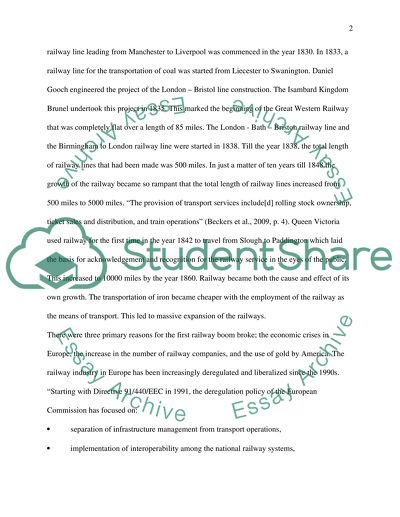Cite this document
(“Development of Railways and it's impact on the society Essay”, n.d.)
Development of Railways and it's impact on the society Essay. Retrieved from https://studentshare.org/miscellaneous/1585178-development-of-railways-and-its-impact-on-the-society
Development of Railways and it's impact on the society Essay. Retrieved from https://studentshare.org/miscellaneous/1585178-development-of-railways-and-its-impact-on-the-society
(Development of Railways and it'S Impact on the Society Essay)
Development of Railways and it'S Impact on the Society Essay. https://studentshare.org/miscellaneous/1585178-development-of-railways-and-its-impact-on-the-society.
Development of Railways and it'S Impact on the Society Essay. https://studentshare.org/miscellaneous/1585178-development-of-railways-and-its-impact-on-the-society.
“Development of Railways and it'S Impact on the Society Essay”, n.d. https://studentshare.org/miscellaneous/1585178-development-of-railways-and-its-impact-on-the-society.


